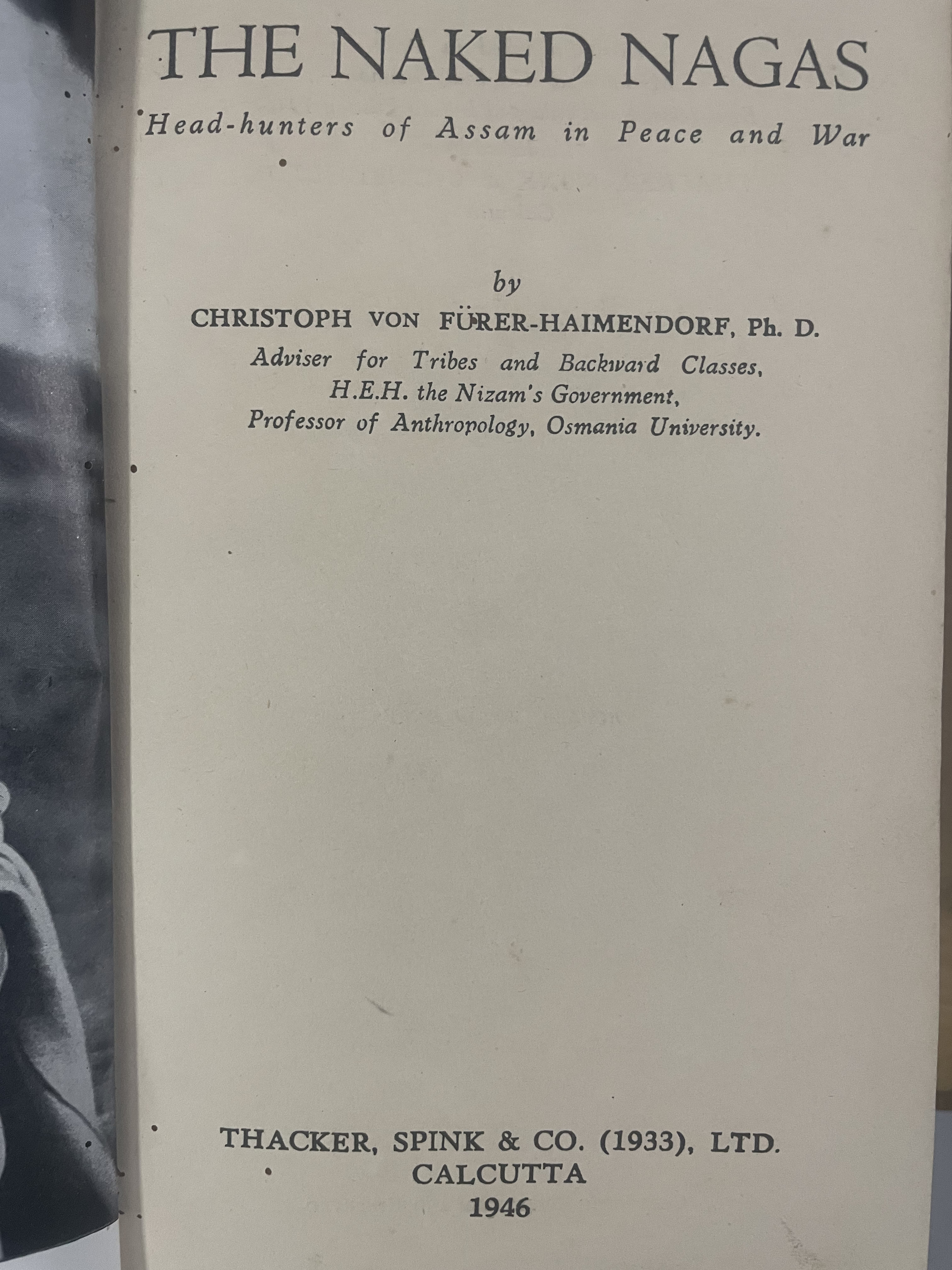The Naked Nagas Head Hunters of Assam in peace and war

About
Summary
Exquisite
TOC
Details
Related
URL
Images
Overview
The Naked Nagas: Head-Hunters of Assam in Peace and War, written by Christoph von Fürer-Haimendorf, is an ethnographic account of the Naga tribes living in the remote Naga Hills of Assam, pre-World War II. Fürer-Haimendorf, an Austrian ethnologist, provides a detailed look into the lives, cultures, and traditions of these tribes based on his fieldwork in 1936-37. The book describes their social structures, religious beliefs, headhunting practices, and daily life, set against the backdrop of the British colonial influence in Northeast India.The Naked Nagas presents a comprehensive ethnographic study of the Naga tribes, offering a vivid description of a remote and relatively unknown region. Fürer-Haimendorf's work details the social organization, customs, and rituals of the Nagas, emphasizing their unique cultural practices, including headhunting. The book is structured as a narrative of Fürer-Haimendorf's experiences living among the Nagas, providing personal insights and observations alongside anthropological data. His work portrays the Nagas' way of life and the impact of external forces, such as Christian evangelism, on their society. The book also contains a collection of photographs that visually document the Naga people and their environment, contributing to its ethnographic richness.
Importance of Book
Ethnographic Record: It serves as a valuable historical and anthropological record of the Naga tribes, documenting their culture and way of life in the 1930s.
Anthropological Contribution: The book contributed to the field of anthropology by providing a detailed case study of a relatively isolated and unique culture.
Colonial History: It offers insights into the dynamics of colonialism in Northeast India, highlighting the interactions between the British administration and indigenous communities.
Intercultural Understanding: Fürer-Haimendorf's work promotes intercultural understanding by presenting the Naga people and their customs in a nuanced and respectful manner.
Key Themes
Ethnographic Documentation: The book provides a detailed ethnographic record of the Naga tribes, capturing their way of life before significant modernization. Fürer-Haimendorf's meticulous observations and descriptions offer valuable insights into a culture that was rapidly changing.
Cultural Relativism: Fürer-Haimendorf approaches the study of the Nagas with a perspective of cultural relativism, seeking to understand their practices within their cultural context rather than judging them by Western standards.
Colonialism and Cultural Change: The book examines the impact of British colonialism on Naga society, highlighting the ways in which colonial policies and missionary activities were transforming traditional ways of life.
The "Other": Fürer-Haimendorf's work contributes to the construction of the "other" in anthropological discourse, presenting the Nagas as exotic and distinct from Western societies. However, he also humanizes them by portraying their daily lives, beliefs, and social structures with empathy and respect.
Visual Anthropology: The inclusion of numerous photographs enhances the ethnographic value of the book, providing visual representations of Naga people, their attire, villages, and cultural practices.
Cultural Significance
Preservation of Cultural Heritage: The book has played a role in preserving and promoting awareness of Naga cultural heritage. It has been used as a source of information and inspiration by scholars, researchers, and members of the Naga community.
Representation of Indigenous Cultures: The Naked Nagas contributes to the representation of indigenous cultures in academic and popular discourse. It has helped to challenge stereotypes and promote a more nuanced understanding of tribal societies.
Visual Documentation: Fürer-Haimendorf's photographs have had a lasting impact on the visual representation of the Nagas, shaping perceptions of their appearance, attire, and way of life.
Critique of Colonialism: The book's portrayal of the impact of colonialism on Naga society has contributed to broader discussions about the legacy of colonial rule and the importance of cultural preservation.
Effects on Society
Academic Influence: The Naked Nagas has had a significant influence on academic studies of Northeast India and its tribal communities. It has been cited and referenced in numerous scholarly works, shaping the direction of research in the region.
Public Awareness: The book has raised public awareness of the Naga people and their culture, both in India and internationally. It has been read by a wide audience, contributing to a greater understanding and appreciation of cultural diversity.
Tourism and Cultural Exchange: Fürer-Haimendorf's work has contributed to the growth of tourism in Nagaland, as visitors seek to experience the culture and landscapes he described in his book. It has also facilitated cultural exchange between the Naga community and the outside world.
Identity and Representation: The book has influenced the way the Naga people see themselves and their culture. It has provided a historical reference point for understanding their traditions and has contributed to the ongoing process of cultural revitalization and identity formation.
Conclusion
The Naked Nagas remains a valuable and influential work, offering a unique glimpse into the lives and cultures of the Naga tribes in the early 20th century. Its detailed descriptions, personal insights, and visual documentation continue to inform and inspire scholars, researchers, and anyone interested in the anthropology of Northeast India.
Title
The Naked Nagas Head Hunters of Assam in peace and war
Author
Christoph von Furer Haimendorf
Name of Publisher
Thacker Spink & Co Calcutta
Publish Date
1946
Subject
\\\"The Naked Nagas: Head-Hunters of Assam in Peace and War\\\" by Christoph von F?rer-Haimendorf, published in 1946, provides an in-depth ethnographic study of the Naga tribes in northeastern India.
Vintage
1901-1947
Edition
First
Category
India
Sub Category
Social Sciences
Rarity
RARE
